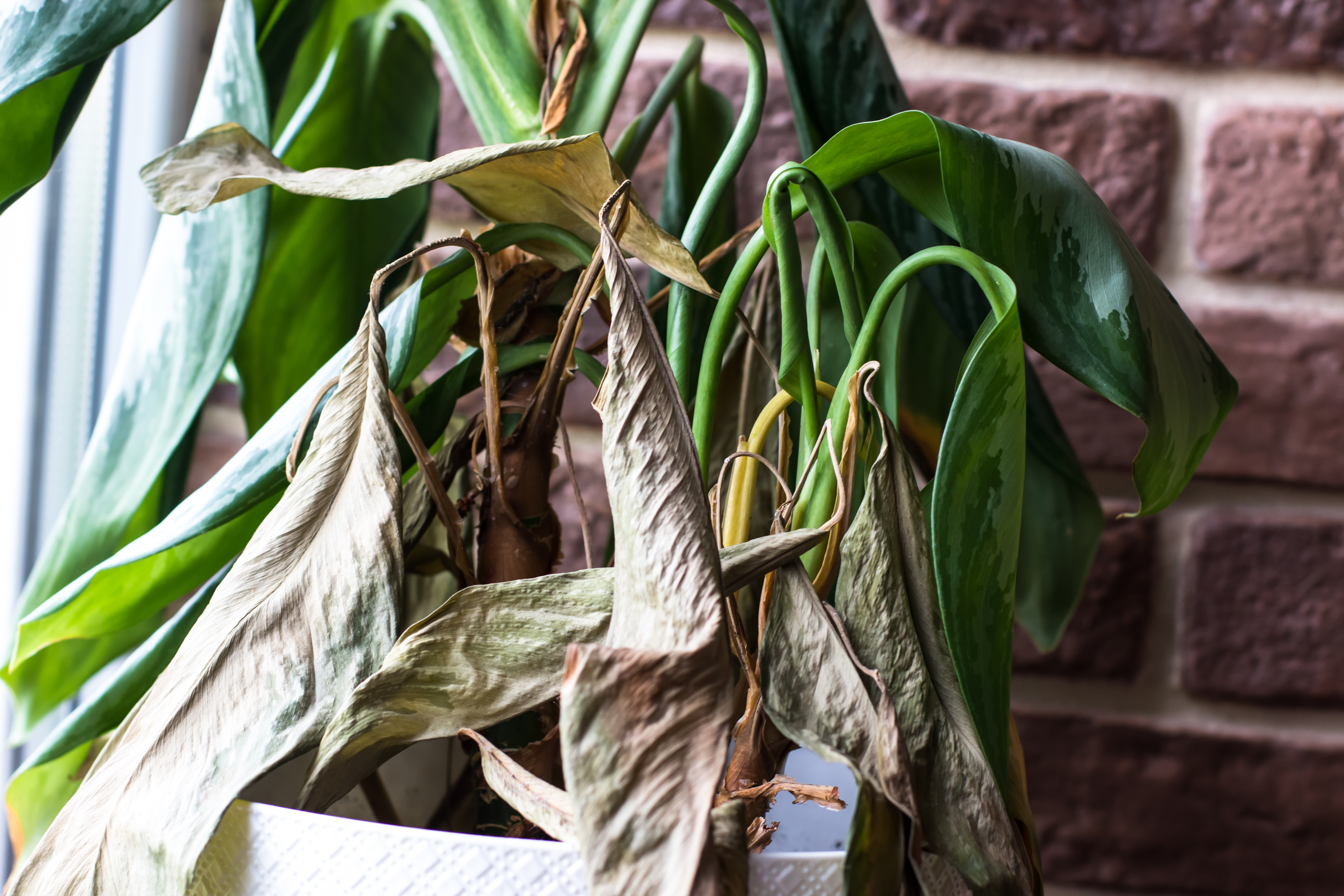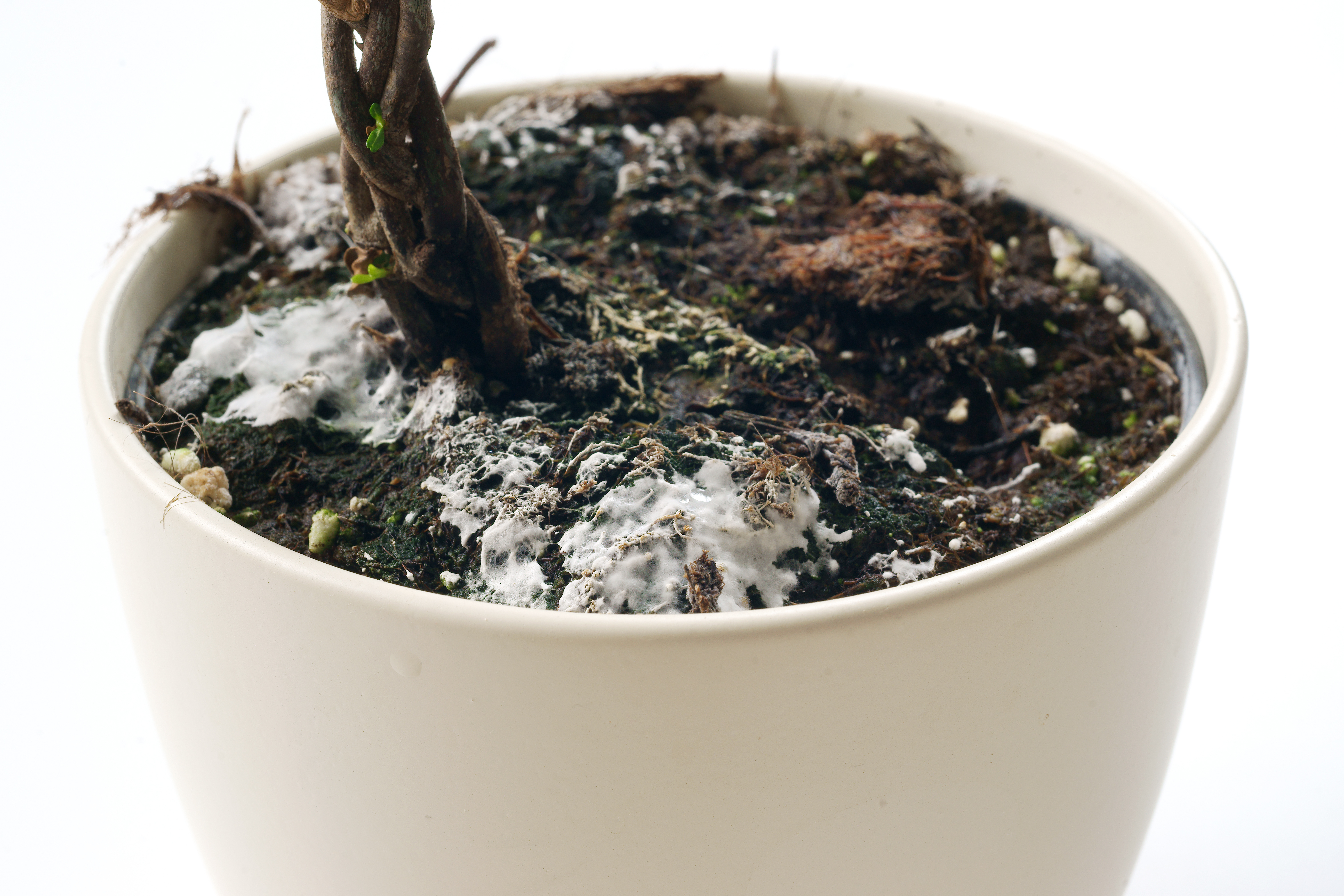Why is this happening?
Overwatered plants can get droopy foliage, yellowing leaves and a multitude of other symptoms. They often need some extra supervision and care in order to recover. Overwatering is one of the most common diagnoses for struggling plants. Overwatering can be fatal so you need to take action immediately.
Symptoms
Yellowing leaves
Droopy leaves
Black, wet, or dry spots starting from the edges of the leaves, sometimes with a yellow border around healthy tissue
Root rot
Stems starts to rot or die off

What to do now
Remove any excess water from the tray or cachepot
If the soil has already soaked up a lot of water you can place your plant on some newspaper or a towel and let it dry for a while before putting the plant back into the pot
Make sure your plant has plenty of light and is placed in a warm spot
If your plant is placed in a cache pot, make sure that it isn't sitting too tight against the nursery pot. This can actually close off the air circulation and cause root rot.
If the soil is excessively wet or water logged
Remove the plant from the pot and inspect the roots - any roots that are rotting or dead need to be trimmed off
Repot your plant into fresh soil that is slightly moist. Choose a pot with drainage holes that will suit the size of your plant's current root system
Use the recommended soil type for your plant.
Add the repotting task to Planta so the watering schedule can adjust to its new settings.
Before watering again, check that the soil isn't too moist. You might need to snooze the watering task in the beginning, until recovered and reestablished
Pause the fertilizing tasks for a while so that the roots can recover. This will be automatically done by Planta when adding a repotting task

Common questions
Why is too much watering bad?
Plants' roots need oxygen as much as they need water, and when you overwater, especially in compacted or clay soils, the soil becomes waterlogged. There are two types of overwatering: too often and lacking drainage.
Giving water too often can lead to the soil never really drying up, which is especially important for plants that are not used to having constant supplies of water - like succulents.
Poor drainage in the pot or soil can lead to waterlogged conditions. Saturated soil significantly lowers the gas exchange the roots need to function properly. Prolonged periods of saturated or wet soil is what causes symptoms of overwatering.
Am I using the correct soil?
By avoiding soil mixes that compact easily and by adding porosity to the soil by mixing different substrates, you can reduce the risk of overwatering. By always growing your plants in pots with drainage holes and providing them with plenty of light you lower the risk even more.
Is it over- or underwatered?
This is a tricky one—since a plant can show similar symptoms, such as wilting, curling, and yellowing leaves, for both issues. The difference lies in how the symptoms look and feel.
With an underwatered plant, the soil is dry all the way through, and the leaves droop slowly. When watered, the plant should start to bounce back within a couple of hours.
For an overwatered plant, many leaves deteriorate quickly, turn yellow, and might fall off. The soil may be wet deep down in the pot, so be sure to check thoroughly. You can also check the roots to see if they feel slimy or soft. Additionally, the soil may sometimes have an unpleasant smell.